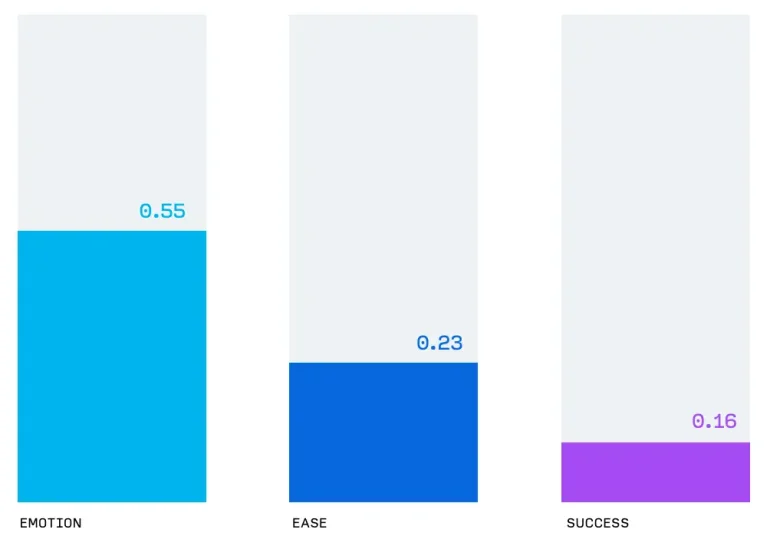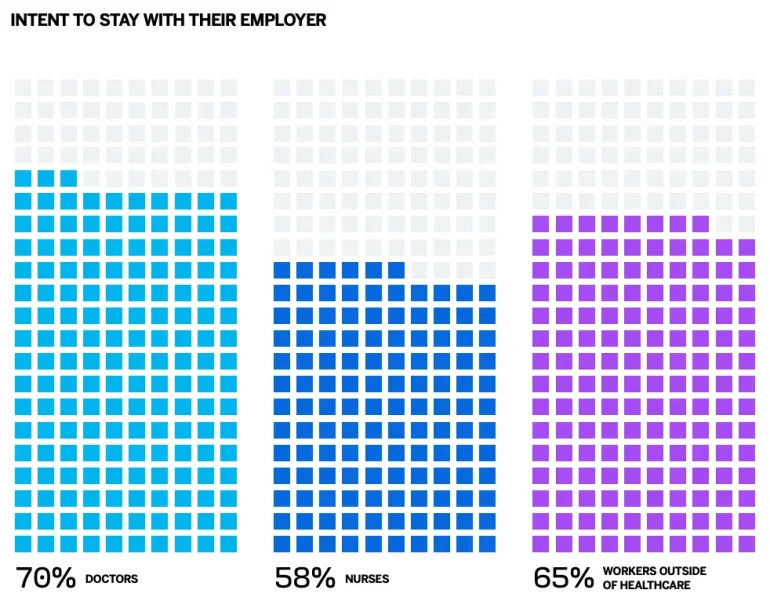
Experience Management
Four trends shaping the healthcare industry in 2025
Healthcare is not just a transactional service, but a deeply human experience that evokes a full spectrum of emotions—from anxiety and fear to relief and gratitude.
At the same time, healthcare professionals are under constant pressure to deliver high-quality care at low-cost - often leading to frustration and burnout among clinicians, diverting them from their core mission of helping others. This is one of the reasons why embracing technology to enhance the patient and provider experiences is crucial.
Our 2025 Healthcare Trends Report delves into the heart of these challenges, and specifically what is top of mind for patients and clinicians.
By listening to feedback across all channels and acting swiftly, we can build a healthcare system that is not only efficient but compassionate and human. A future where patient and provider experiences are intertwined, creating a resilient and effective healthcare landscape.
What are the 2025 Healthcare Trends?
Our Healthcare Trends Report uncovers what’s top of mind for patients and healthcare professionals - and how healthcare providers can act on these insights to ultimately improve the patient and provider experiences.
Download the full report and discover the strategic areas healthcare providers should focus on moving forward.
1. Empathy unlocks trust across demographics and settings
Trust in healthcare providers plummeted in the first half of the 2020s. In April 2020, 71.5% of Americans reported trust in physicians and hospitals. By January 2024, that number had dropped significantly - to just 40.1%.
Our study examined the extent to which patient trust is influenced by three primary factors: emotion, ease, and success. While all three elements are important, our findings indicated that one factor significantly surpasses the others—emotion. Specifically, how patients perceive the staff's concern for them as individuals—the emotional aspect of care—has the most profound effect on trust, greatly surpassing the ease of accessing care and even the success in receiving it.

*Impact scores were measured as standardized regression coefficients
2. Care team collaboration drives patient experience
If emotion is the main factor influencing patient trust, then what drives the patient’s emotional experience? Patients identified teamwork—collaboration among members of the care team—as the most significant element affecting their emotional experience of care. This specifically pertains to patients’ perceptions of how well the teams work together. This is true across all three care settings: inpatient, outpatient, and the ER.

Teamwork, or collaboration among care teams, is a vital component of the patient experience. In recent years, teams have undergone notable transformations with the rise of traveling nurses, higher turnover rates, reduced staffing ratios, and an increasing reliance on advanced practice providers. These shifts certainly affect both local teams and the overall organizational culture. However, this report emphasizes a critical distinction between the functioning of healthcare systems as a team and the patient's perception of that teamwork.
3. The paradox of improved provider engagement and a decline in intent to stay
In 2024, the doctor/physician burnout rate fell below 50% for the first time in four years, with nurses showing a similar trend. Our survey results indicate that both doctors and nurses are more engaged in 2024 compared to 2023.
Doctors exhibit a slightly more optimistic view regarding their career prospects, leadership opportunities, and workload. However, the most notable difference between the two groups is in their intention to remain with their organizations, which has increased from a nine-point gap in 2023 to 12 points in 2024. Specifically, 30% of doctors and 42% of nurses are contemplating leaving their organizations within the next five years.

*Data represents the percentage of respondents who plan to stay at their organization for at least five more years
4. Comfort with AI starts with making care delivery easier
By simplifying care processes, AI creates significant opportunities to enhance the experiences of both patients and providers. Our research indicates that, currently, clinicians prefer AI to operate in a supportive role. Among various applications, comfort levels for doctors and nurses are highest (53%) when it comes to AI managing administrative tasks.
Providers’ caution isn’t a barrier—it’s a strength. Their protectiveness for patients will ultimately ensure that AI meaningfully enhances caring, not just healthcare.
- Adrienne Boissy, MD, MA, Chief Medical Officer at Qualtrics
Across industries, both employees and customers prefer AI to manage tasks rather than engage directly with individuals. In healthcare, this hesitance is intensified by worries about privacy, legal issues, and patient safety. Currently, doctors and nurses regard AI as a means to simplify their workloads, allowing them to foster the meaningful human connections they have always sought.
Download the full report below to learn how you can act on these insights to elevate the patient and provider experiences.
Free eBook: 2025 Healthcare Trends Report